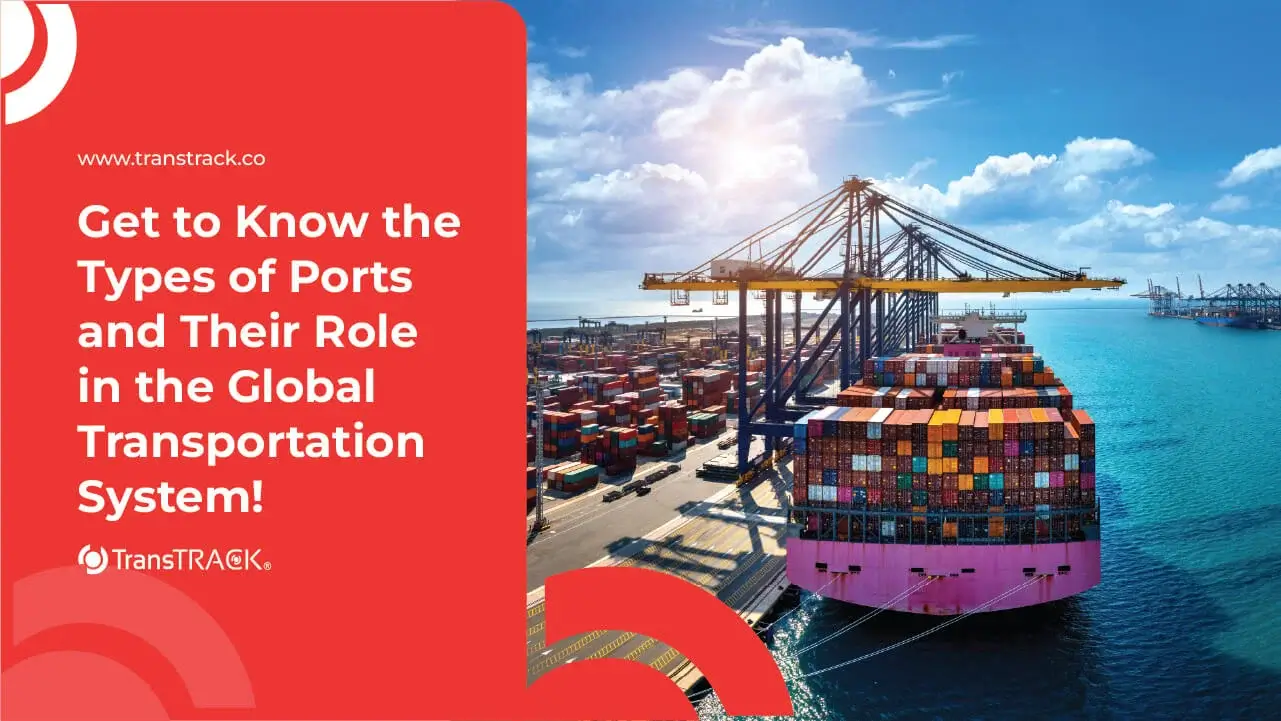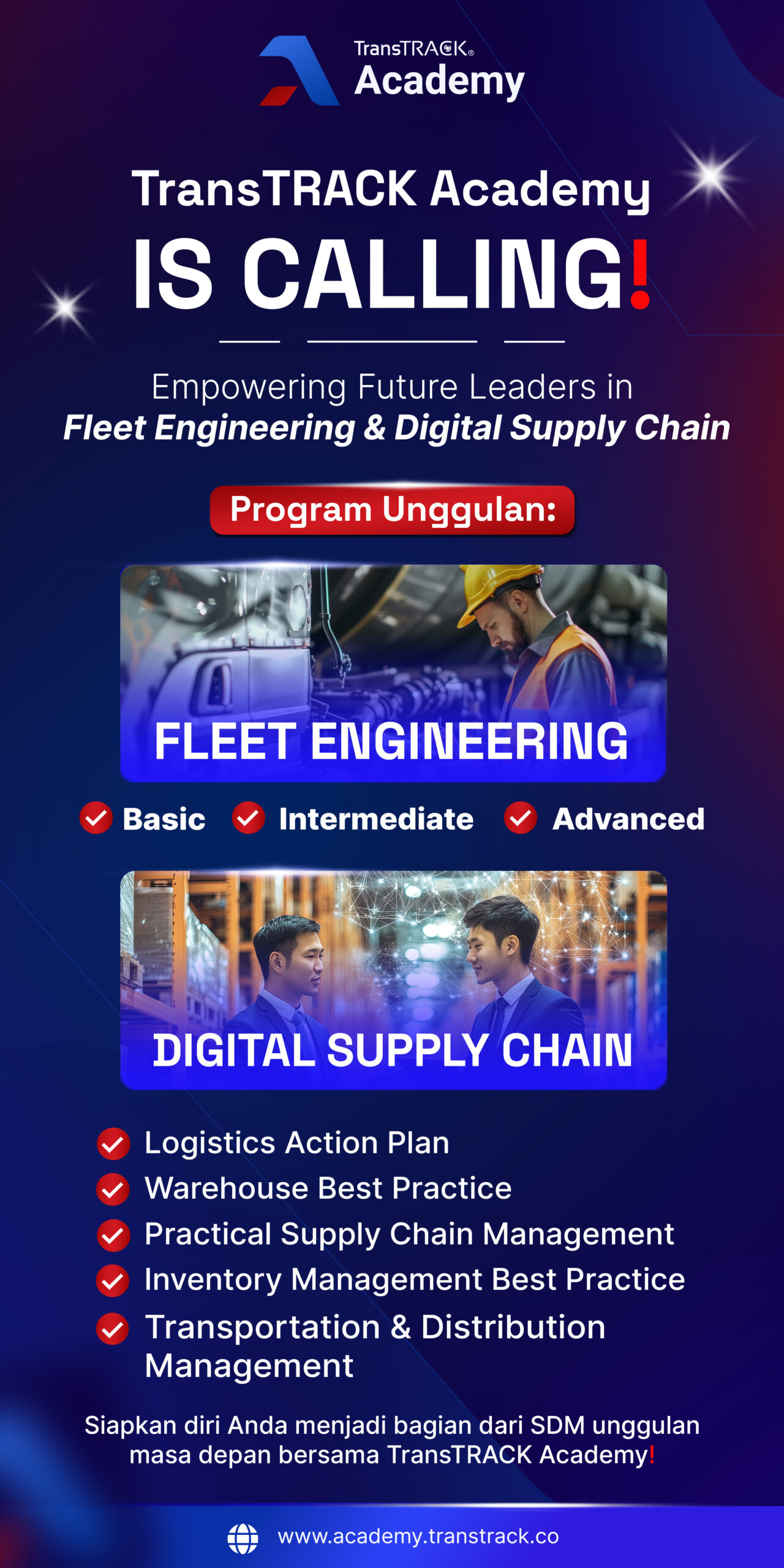Get to Know the Types of Ports and Their Role in the Global Transportation System!
Posted on April 22, 2025 by Nur Wachda Mihmidati

Ports are a vital element in the global transportation and logistics system, serving as the main connecting point between various modes of transportation and international markets. With such a crucial role, ports must continue to evolve to meet the increasingly complex and dynamic demands of trade. In facing these challenges, port modernization through advanced technology is a necessity that cannot be delayed. Technologies such as integrated port management systems, automation of loading and unloading processes, and real-time monitoring of goods flow can bring higher efficiency and effectiveness.
Port Transport System from TransTRACK comes as an innovative solution that can optimize port operations and ensure a smooth supply chain. In this article, we will discuss the different types of ports based on their function, scale of activity, location, and management authority, and how a system like Port Transport System can support the sustainability and growth of ports in the future.
Important functions of ports in the transportation and logistics system
Ports have important roles in the transportation and logistics system, including:
- Distribution Center: Entry and exit points for imports and exports.
- Temporary Storage: Provides an area for goods awaiting further processing.
- Increases Efficiency: Speed up loading and unloading and distribution of goods.
- Transportation Mode Connectivity: Connecting ships, trucks, and trains.
- International Trade Facilitation: To be the gateway to global trade.
- Customs: A place where goods are inspected and regulated.
- Industrial Management: Supports the delivery of raw materials and industrial products.
Overall, ports are important for the smooth flow of goods and the global economy.
Port Classification Based on Function
Ports can be classified based on their function as follows:
Commercial Port
Ports that are used for trading activities, both import and export, and support the distribution of goods between regions or countries.
Special Port (Industrial Port/Mining Port)
Ports built to serve specific industrial needs, such as the transportation of raw materials or products from or to factories or mine sites.
Ferry Port
Ports used for crossing services between islands or between countries by ferry, generally serving passenger and vehicle transportation.
Fishing Port
Ports used for fishery-related activities, such as landing of fish catches, distribution of fishery products, and supporting the local fishing industry.
This classification reflects the purpose and type of activities that take place at each type of port.
Types of Ports Based on Their Location
Ports can be classified based on their location, which affects the types of vessels they can serve and the logistics functions they perform. Each type of port has different characteristics and roles, depending on its water depth and geographical position. Here are some port classifications based on location:
Deep Sea Port
Located in deep sea waters, these ports are capable of accommodating large ships with sufficient depth for navigation of large vessels, such as container ships and tankers.
Coastal Port
Located along the coastline, these ports serve medium-sized vessels and are generally used for regional or domestic distribution of goods.
River Port / Inland Port
Located along rivers or inland areas, these ports serve small vessels or boats for the distribution of goods in areas not covered by land transportation modes.
This classification helps determine the function and capacity of each port in supporting the transportation and logistics system.
Port Classification Based on Scale of Activities
Ports can also be classified based on the scale of their activities, which refers to the scope of operations and the area served. The following is a classification of ports based on the scale of their activities:
International Port
These ports serve trade between countries, both for the import and export of goods to the global market. International ports usually have complete facilities to handle various types of cargo and large vessels.
National Port
Ports that function to support trade activities between regions within a country. Although they do not serve international trade, these ports are still important for the distribution of goods at the national level.
Regional Port
Ports that serve trade activities within a certain region or area. Usually used for distribution of goods within one province or several adjacent regions.
Local Port
Ports that serve trade activities at the local or village level, often with smaller capacities and catering to limited scale shipments of goods. These ports support the distribution of goods for more limited local or regional needs.
This classification illustrates the different scale and scope of services provided by ports in supporting logistics and transportation systems.
Types of Ports Based on Management Authority
Ports can also be classified based on their management authority, which includes who is responsible for the operation and management of the port. The following are the types of ports based on their management:
- Ports Managed by SOEs (such as Pelindo):
- Ports managed by state-owned enterprises (SOEs), such as PT Pelabuhan Indonesia (Pelindo). SOEs have the authority to manage, operate, and develop ports, as well as ensure the smooth running of logistics and transportation activities.
- Privately Managed Ports:
- A port whose management is handed over to a private company. Usually, these ports are built and managed by private companies with permission and supervision from the government, but their operations focus more on commercial interests.
- Local Government Managed Port:
- A port that is managed by the local government. This management aims to support the local economy and trade activities that are limited to a particular region or area. The local government is responsible for port operations and development.
This classification shows the various port management models that can vary according to the roles and responsibilities of each party involved.
Challenges and Role of Port Modernization
Port modernization faces various challenges, but also offers opportunities to increase efficiency and capacity to support global trade. Some of the challenges and roles of port modernization are as follows:
Port Modernization Challenges:
- Infrastructure Limitations:
- Many ports still have outdated or inadequate infrastructure to handle large vessels and increasingly high cargo volumes. Renewal and upgrading of facilities is urgently needed.
- Congestion and Delays:
- An increase in the number of incoming vessels and goods may cause congestion at the port, resulting in delays in loading and unloading and delivery of goods.
- Regulations and Compliance:
- Ports must comply with various national and international regulations, such as safety, environmental and customs rules, which change frequently and require customization.
- Technology and Information Systems:
- The implementation of new technologies such as digital-based port management systems, automation, and the Internet of Things (IoT) still faces obstacles related to investment, human resource training, and integration with existing systems.
- Environmental Impacts:
- Port operations pose environmental risks, such as air pollution, noise, and water pollution. Therefore, modernization must take into account sustainability and environmentally friendly aspects.
Role of Port Modernization:
- Improved Operational Efficiency:
- With the latest technologies, such as loading and unloading automation, goods tracking systems, and robotics, ports can improve efficiency, reduce waiting times, and increase operational capacity.
- Improved Security and Safety:
- Port modernization also includes improving security and safety systems, with the application of advanced technology to monitor vessel traffic, access control, and reduce the risk of accidents.
- Reducing Logistics Costs:
- Improved infrastructure and automation can help reduce operational and logistics costs, which in turn will benefit entrepreneurs and strengthen port competitiveness in the global market.
- Support for International Trade:
- With increased capacity and efficiency, modernized ports can speed up export and import processes, support smooth global supply chains, and strengthen the port’s position in international trade.
- Sustainability and Eco-Friendliness:
- Port modernization can include the use of green technology, better waste management, and the implementation of renewable energy to reduce negative environmental impacts.
Port modernization is critical to maintaining competitiveness in the global economy, improving supply chain efficiency, and meeting evolving trade demands.
With advanced infrastructure and the latest technology, it plays a key role in supporting international and domestic trade. With existing challenges, especially in terms of congestion, security, and environmental impact, technology-based solutions are crucial.

For this reason, Port Transport System from TransTRACK comes as the right solution in optimizing port management. With real-time tracking technology, efficient system integration, and in-depth data analytics, TransTRACK helps ports manage the flow of goods, minimize delays, and improve overall operational performance. Join us in transforming the future of your port and ensuring faster, more efficient, and safer logistics. <Contact us to learn more about how TransTRACK’s Port Transport System can support your port management.
Recent Post
Topic :
 Bahasa Indonesia
Bahasa Indonesia









